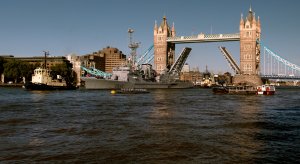This week, a driver was shot dead in rush hour traffic in Cricklewood. There’s no word on whether this was gangland drama, personal feud, or just the normal behaviour of city drivers, amplified by the presence of one additional lethal weapon. Police closed the Hendon Way for a “fingertip search”.
Police in Barking are just “investigating” the violent killing of a baby.
It just goes to show what a terrible effect this war on the Motorist is having when the fire brigade are beaten by the bike. The bicycling heroes of the Clapham Common fire are a sign of Wandsworth’s “traffic misery” — “misery” that is to continue, as a development project that would have included fixing up the “bottleneck” one-way system was vetoed by the communities minister merely because it would “harm the character of the area”. Philip Hammond should surely have a word in his ear about this blatant act of war on the Motorist.
Except! What’s this? Phillip Hammond, he who claims to want to put an end to the war on the Motorist, is trying to give more power to the Vehicle & Operator Services Agency to stop and punish Motorists and Motorist companies.
Highways Agency engineers working on widening the M25 (“to reduce congestion”) are having to waste time — time that they could be spending building roads — putting in fences and hedges to protect a St Albans naturist club from the noise. “We’re not closing,” shouted the militants from their trampolines. “We’ll never close, we’re here to stay forever, whatever life throws at us”.
A cabbie is reported to have had a “lucky escape” after being doored by Beyonce Knowles in her Mercedes outside Harrods. A lucky escape from what?
Rest your eyes on the new Picadilly line trains (due 2012).
Last week we reported that finances for Crossrail were safe. But a week is a long time in politics…
The CPRE have investigated the cycling “revolution” in London and discovered, er, there isn’t one.
Lollipop ladies are to get spy cams in their lollipops to catch Motorists who think it’s fine to drive over children. The comments on the Daily Mail article are certainly up to the high standard that we have come to expect. “However, this would make mean making the little darlings wait sometimes, and of course we can’t be destroying the idea that our cute little precious kiddies have to have everything Right Now Instantly, can we?” Oh you took the words right out of my mouth, Batman (if that is your real name).
And the Daily Mail is similarly conflicted over who to side with in the story of the primary school kids cycling to school unsupervised. They’re nice upper middle class kids in Dulwich! But they’re cycling, and on the pavements! But it’s two fingers to the interfering politically correct health and safety nanny state! But, but…
Spies! Stealth taxes! Those NuLiebour Big Brother councils are fighting dirty with conspicuous CCTV smart cars.
Meanwhile, in the regions…
Two children have been crushed to death by powered gates in gated communities designed for people who are paranoid about car theft.
The famously Motorist persecuting Bristol City Council, administrators over a city that, er, consistently has the highest and most debilitating car dependency of any major city in the UK outside of London, are fighting the war on the Motorist by removing a whole 12 city centre parking spaces (out of thousands) in order to install cycle stands.
Finally, your moment of zen, via Boing Boing, the Singapore fail train:












